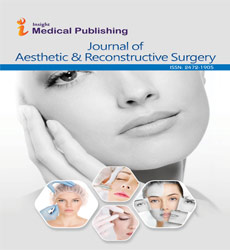Buccal Fat Pad Removal
George Esposa*
Published Date: 2025-01-16DOI: 10.36648/2472-1905.11.1.099
George Esposa*
Department of Pharmacy, University of Kinshasa, Kinshasa, Congo
- *Corresponding Author:
- George Esposa
Department of Pharmacy,
University of Kinshasa,
Kinshasa,
Congo,
E-mail: esposageorge@gmail.com
Received date: February 26, 2024, Manuscript No. IPARS-24-18677; Editor assigned date: February 29, 2024, PreQC No. IPARS-24-18677 (PQ); Reviewed date: March 14, 2024, QC No. IPARS-24-18677; Revised date: January 09, 2025, Manuscript No. IPARS-24-18677 (R); Published date: January 16, 2025, DOI: 10.36648/2472-1905.11.1.097
Citation: Esposa G (2025) Buccal Fat Pad Removal. J Aesthet Reconstr Surg Vol:11 No:1
Description
Buccal fat pad removal, a surgical procedure aimed at facial contouring, has gained popularity in recent years among individuals seeking a slimmer, more defined facial appearance. This cosmetic surgery targets the buccal fat pads, which are distinct pockets of fat located in the cheeks.
The buccal fat pads, also known as Bichat's fat pads, contribute to the roundness and fullness of the cheeks, particularly in younger individuals. While they serve a purpose in facial aesthetics, some individuals may feel that overly prominent buccal fat pads give their face a chubby or overly rounded appearance, leading them to consider buccal fat pad removal.
The procedure, typically performed by a qualified plastic surgeon, involves making a small incision inside the mouth, near the back of the cheek, to access the buccal fat pads. Through this incision, the surgeon carefully removes an appropriate amount of fat from the pads to achieve the desired level of facial contouring. The incision is then closed with dissolvable sutures.
Buccal fat pad removal is often considered a relatively straightforward outpatient procedure, usually completed within an hour under local or general anesthesia. Recovery time is typically minimal, with most patients able to resume normal activities within a few days following surgery. However, swelling and bruising in the treated area are common post-operative side effects, which usually subside within a week or two.
It's essential for individuals considering buccal fat pad removal to consult with a qualified and experienced plastic surgeon to determine if they are suitable candidates for the procedure. While buccal fat pad removal can effectively enhance facial contours and achieve a more sculpted appearance, it's important to have realistic expectations about the outcome of the surgery.
As with any cosmetic procedure, there are potential risks and complications associated with buccal fat pad removal, including infection, asymmetry, and nerve damage. Therefore, individuals should thoroughly discuss their goals, concerns, and medical history with their surgeon before undergoing surgery to ensure a safe and satisfactory outcome.
Open Access Journals
- Aquaculture & Veterinary Science
- Chemistry & Chemical Sciences
- Clinical Sciences
- Engineering
- General Science
- Genetics & Molecular Biology
- Health Care & Nursing
- Immunology & Microbiology
- Materials Science
- Mathematics & Physics
- Medical Sciences
- Neurology & Psychiatry
- Oncology & Cancer Science
- Pharmaceutical Sciences
